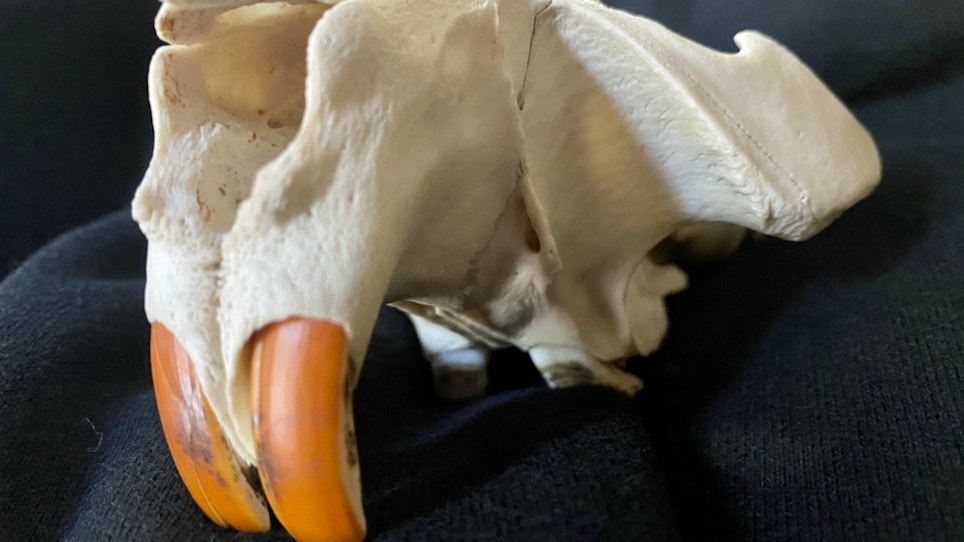Ask someone about the defining characteristics of a beaver and they'll probably mention one of three things: a giant tail, giant teeth or a big, brown body.
All are correct, of course. The body is hard to miss. The tail, and it's percussive slap on the water when a beaver's upset, is loud to the point of being shocking. Those teeth, though, they're impossible to miss.
A beaver's teeth continue to grow throughout their lives. They're used to cut trees to build their lodge, which in creeks or small rivers may create a dam. The lodge is constructed of various size trees, mud and vegetation, all of which is cut, dragged and precisely placed by the beaver. The internal home, protected by the surrounding limbs and with a dry floor, keeps them warm and dry.
Take a look below inside a beaver lodge:
Notice the gnawed wood inside the lodge? Beavers never stop trimming, cutting and honing their front four teeth, the incisors. Because they cut hardwood and softwood, their teeth have to be sharp and tough.
Why are the incisors orange, though?
According to researchers at Northwestern University, the orange enamel coating on the incisors contains traces of iron and magnesium. The enamel, the researchers said, is comprised of layers of hydroxylapatite “nanowires” surrounded by minerals including iron and magnesium.
Nutria also have orange teeth. While they don't gnaw on trees, nutria constantly are chewing on vegetation in marshy areas.






